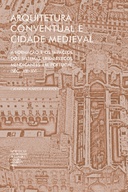Explore

Arquitetura conventual e cidade medieval
0 Ungluers have
Faved this Work
Login to Fave
This book analyses the Portuguese context of one of the most important urban systems of medieval cities – that which resulted from the settlement of the mendicant orders and which would leave a profound mark on the urban landscape. The case studies to be considered are the monastic systems established from the 13th to the 15th centuries in the principal cities and towns in Portugal: Lisbon, Santarém, Coimbra, Oporto, Évora and Guimarães. Following the initial analysis which examines the processes of how the monastic systems were formed, an assessment of the impacts that these systems had on the urban space will be made, namely in relation to the role they played in the spatial dynamics which characterised Portuguese cities in the Late Middle Ages. This book intends to address two fundamental concerns: to include a critical analysis of the Portuguese case amongst the academic work in this field produced on a European level and to offer a contribution to the affirmation of the importance of the “mendicant phenomenon” on the history of the city and urbanism in Portugal.
This book is included in DOAB.
Why read this book? Have your say.
You must be logged in to comment.
Rights Information
Are you the author or publisher of this work? If so, you can claim it as yours by registering as an Unglue.it rights holder.Downloads
This work has been downloaded 67 times via unglue.it ebook links.
- 67 - pdf (CC BY-NC-ND) at Unglue.it.
Keywords
- Medieval city
- mendicant orders
- Portugal
- Portuguese
- religious houses
- thema EDItEUR::A The Arts::AM Architecture
- urban space
Links
DOI: 10.14195/978-989-26-1518-9Editions

